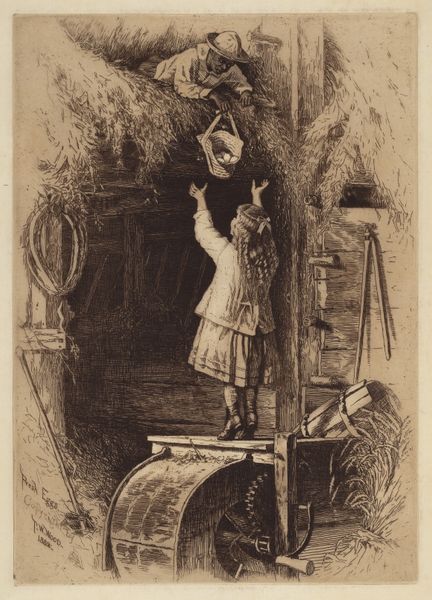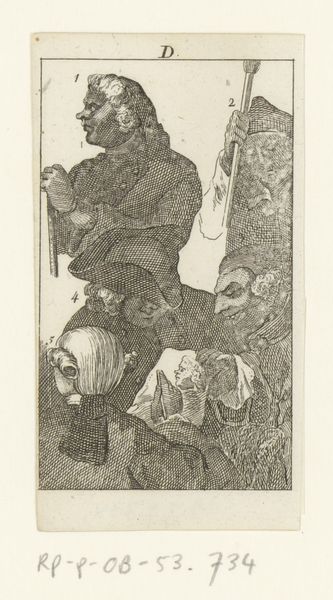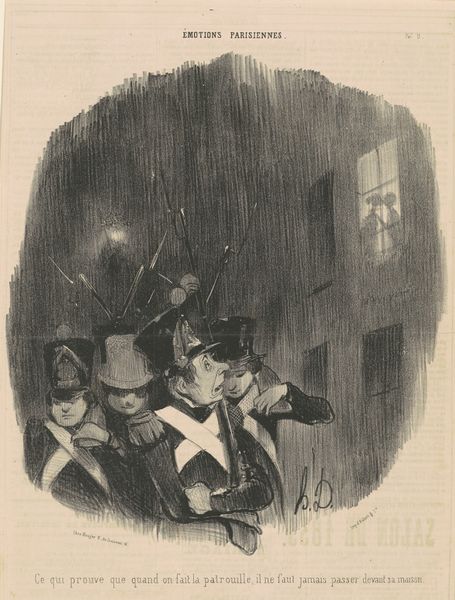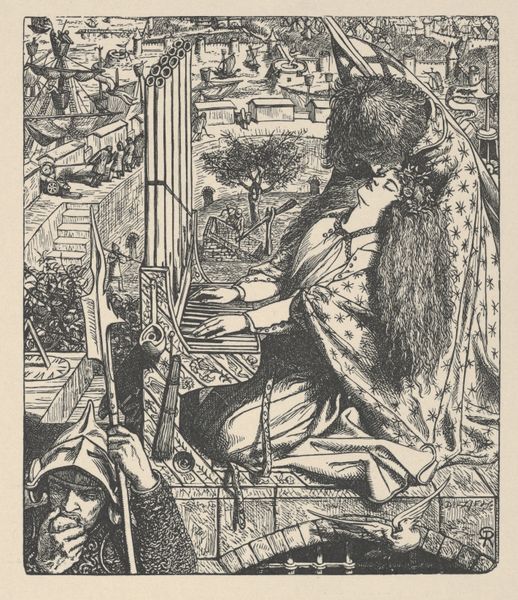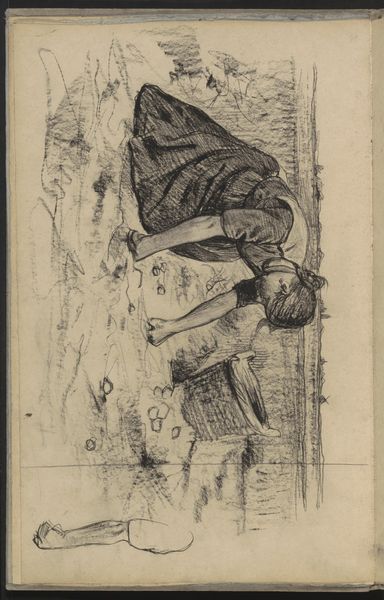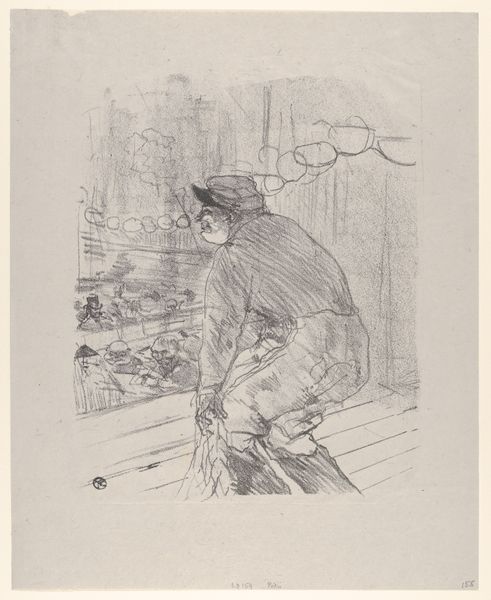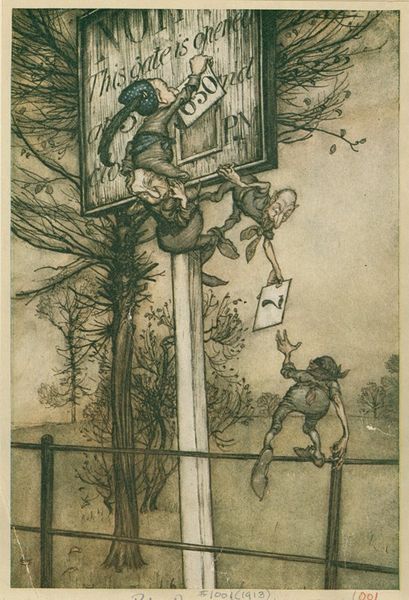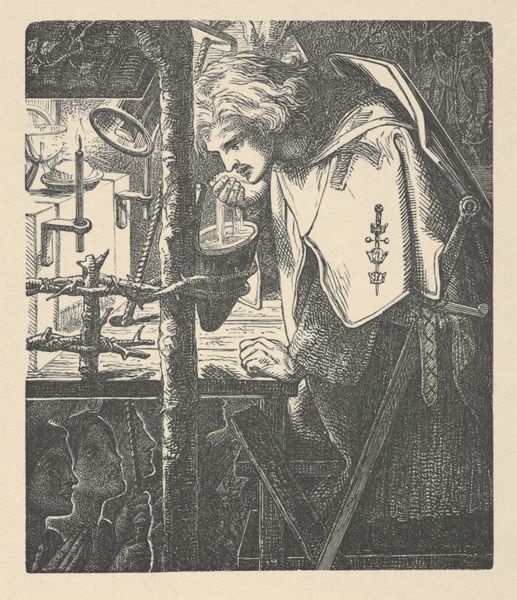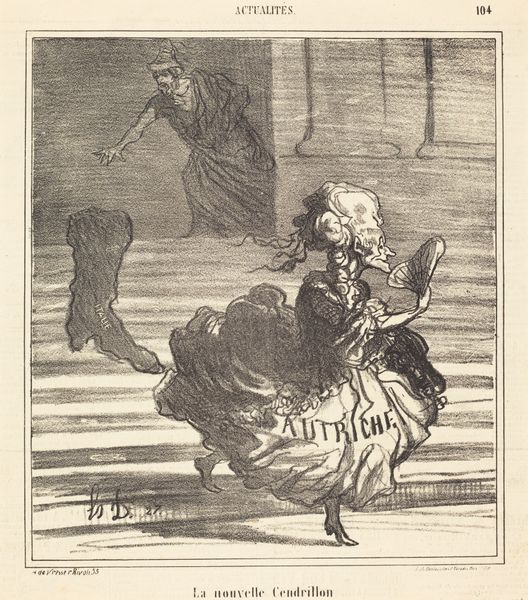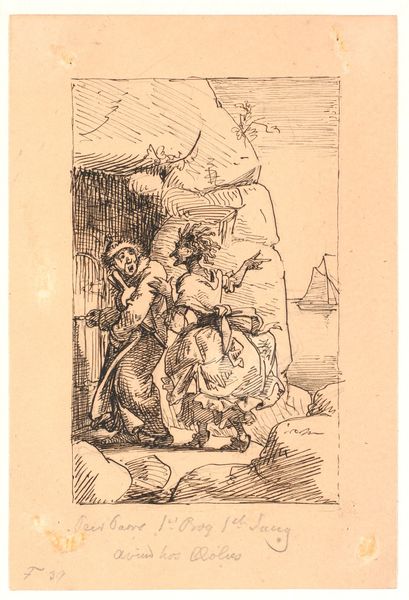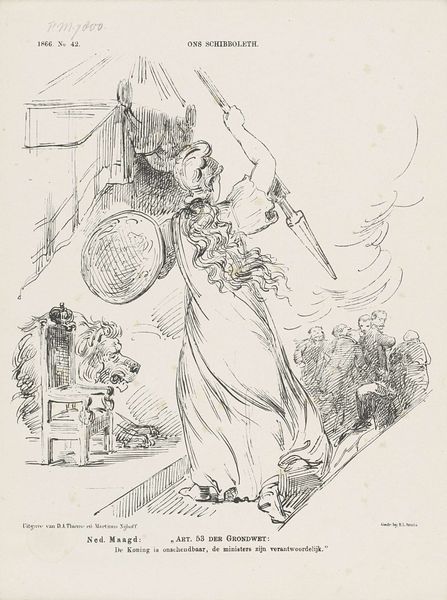
drawing, print, etching
#
portrait
#
pencil drawn
#
drawing
# print
#
impressionism
#
etching
#
landscape
#
pencil drawing
#
genre-painting
Dimensions: sheet: 16 1/2 x 10 9/16 in. (41.9 x 26.8 cm) plate: 11 7/16 x 7 5/8 in. (29 x 19.3 cm)
Copyright: Public Domain
Curator: The stillness in James Tissot's etching, "The Hammock," created around 1880, is palpable. The Metropolitan Museum of Art houses this small gem, which presents a woman lost in her book in a peaceful outdoor setting. The scene exudes calm. Editor: Yes, I'm immediately struck by that sense of tranquil domesticity, and by the strong diagonal created by the hammock and the woman's repose. There’s a kind of studied casualness that feels very particular to its time. Curator: The hammock itself serves as a potent symbol. Resting in a hammock can be seen as symbolic of contemplation, or even surrender, linking to a deeper psychological state. Hammocks, historically, represent a suspended state of being, literally and metaphorically, caught between worlds. Editor: Interesting! Because beyond its symbolic dimension, it speaks volumes about leisure and social class. This is a woman of privilege, secure enough to spend her time reading outdoors. The placement of the parasol emphasizes this social context further, doesn't it? A barrier against the sun's "damaging" effects! Curator: Absolutely. And note the book; its pages slightly unfurled are a cultural artifact itself. It suggests a woman engaging with intellect or perhaps escaping through the pages of fiction. Consider books not just as a medium, but as emblems of knowledge and status in the 19th century. Editor: Tissot’s style here also captures something important. The sketchiness of the etching—the seemingly unfinished quality—paradoxically adds to that impression of an intimate, unguarded moment. It’s both calculated and yet manages to look spontaneous, doesn’t it? What do you make of that low stool beside her, partially cropped out of view? Curator: Good point; cropped details add immediacy to the image! As for the stool—perhaps suggesting an interrupted action, or a subtle indication of domestic support, a resting place for a cool drink or sewing perhaps, grounding the idyllic scene in the everyday realities of the time. Editor: So it's a glimpse into a specific culture of leisure, cleverly using recognizable and shared visual cues. A real commentary on the times as it represented itself. Curator: Precisely, capturing both individual tranquility and wider socio-cultural currents within a simple scene. A peaceful escape and coded record.
Comments
No comments
Be the first to comment and join the conversation on the ultimate creative platform.
